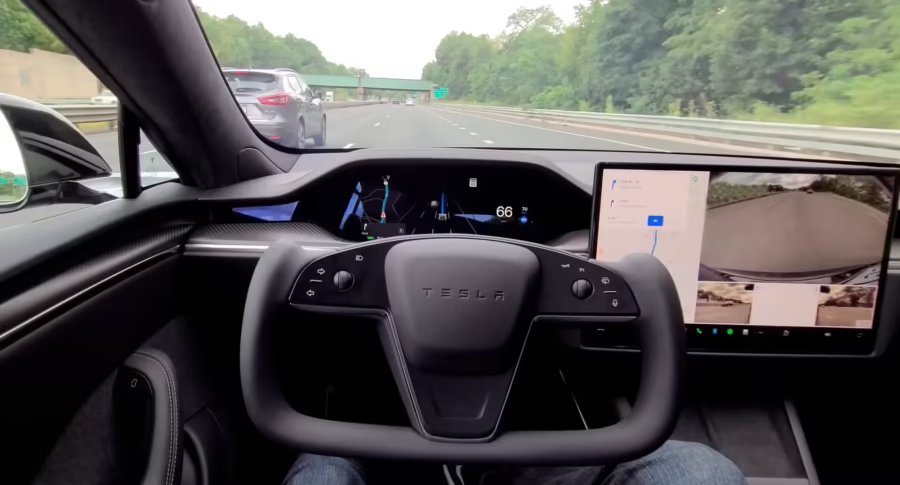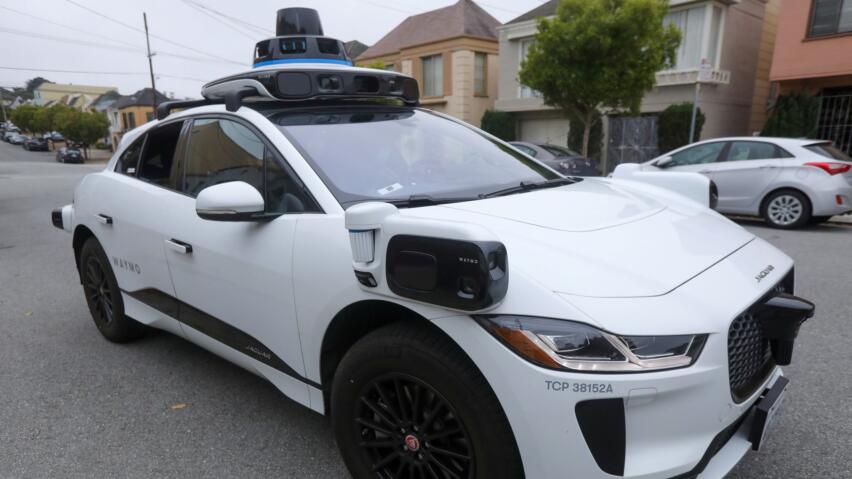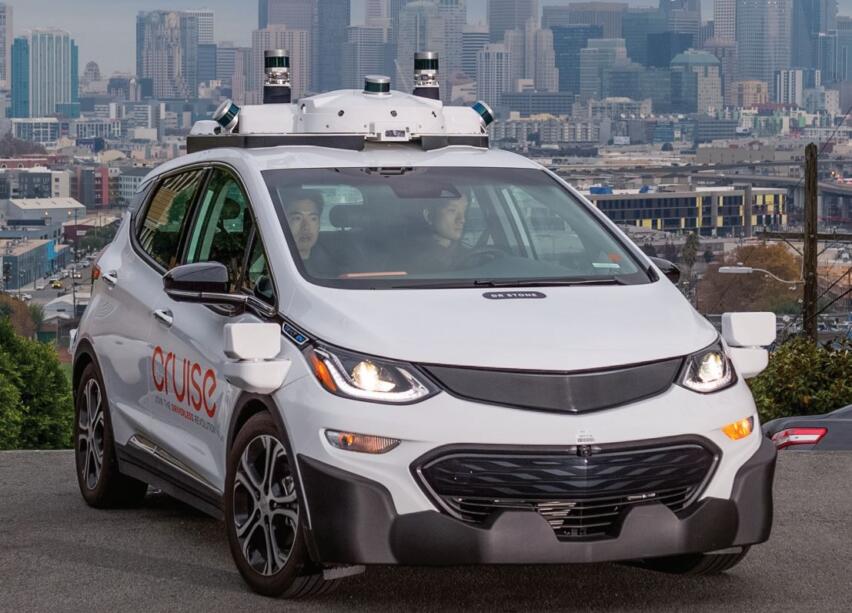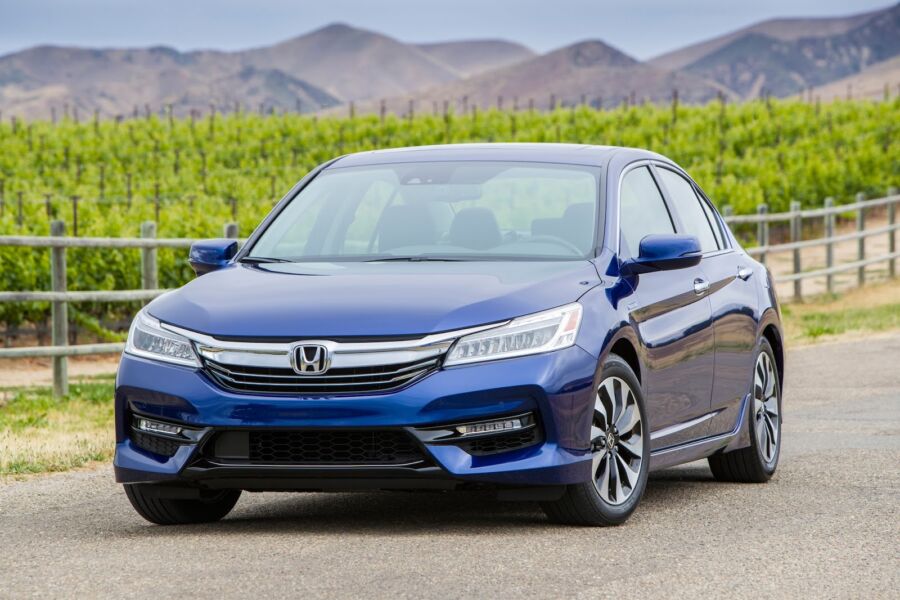Are Self-Driving Cars Safe?
The leading cause of accidents on the road today is human error. Which is one of the arguments that engineers continuously use to promote the use of self-driving cars. Which poses the question for many road users; are self-driving cars safe?
Experts are extremely divided on this subject because while some feel that an autonomous driving system is more reliable than a human’s driving ability, others feel that humans can respond more quickly and appropriately to unexpected situations.
In today’s blog post we’ll discuss which self-driving vehicles are on the roads today, whether or not they are safe, how they work, and where to sell your car for the MOST cash if you’d like to trade-up into one.
Are There Self-Driving Cars on the Road Today?
Yes, there absolutely are. However, there are very few in Canada at this time. The most noticeable ones on the roads right now are owned by Uber and Lyft.
And they only operate in certain cities, certain neighbourhoods, and in certain “zones” that are outlined by the company that operates them. Which means that when and where you’ll find them will be limited.
How Safe Are Self Driving Vehicles?
Even the most technologically advanced vehicles will have their share of quirks. But something as complex as a self-driving vehicle can easily be riddled with problems.
Which was the case with Uber vehicles back in 2018. The rideshare company put full self-driving vehicles on their fleet. However, shortly after removed them due to a fatal collision involving one of their self-driving cars and a pedestrian.
Although a casualty occurred from a self-driving Uber, they put some of their self-driving cars back on the road this past winter.
How Do Self-Driving Cars Work?
Self-driving cars, use a combination of sensors, software, and artificial intelligence to drive without human input.
These cars are equipped with technologies like lidar, radar, cameras, and GPS to detect their surroundings. The sensors gather real-time data about road conditions, traffic, pedestrians, and obstacles.
The vehicle’s systems interpret the environment, plan a safe route, and control the car’s steering, acceleration, and braking. High-definition maps from GPS navigation help the vehicle know exactly where it is at all times.
How Do Self-Driving Cars Know What to Do?
Self-driving vehicles operate mainly by collecting data and processing it rapidly in its software programs. Because essentially, self-driving vehicle software is just A.I. that is constantly learning (just as A.I. usually does).
Self-driving cars operate through a three-step process:
- Perception (understanding the environment)
- Planning (choosing the best path)
- Control (executing driving decisions)
The more they operate, the more data they collect to improve their performance because they run primarily on artificial intelligence.
While still developing, self-driving technology is advancing rapidly and aims to reduce accidents and dramatically reduce congestion on Lower Mainland (and everywhere) roadways.
Which Car Brand Sell Self-Driving Cars in Canada?
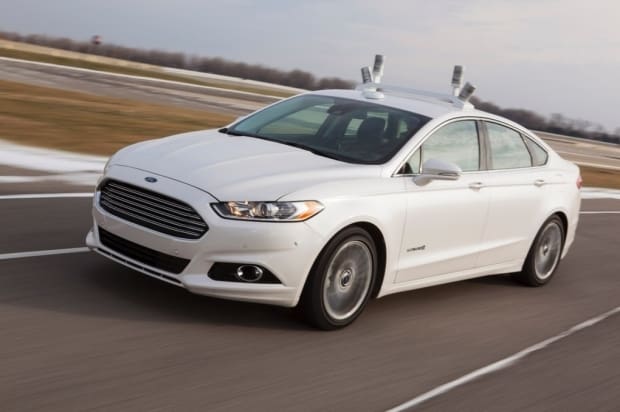
While fully self-driving cars are not yet on the market today, many technology-based companies are working tirelessly on achieving it.
And although you can’t purchase self-driving vehicles to get you from point A to point B, you can purchase vehicles that have various self-driving or driving assist features.
Below are the automakers that are currently selling vehicles with self-driving and driver assist features in Canada.
Car Companies with Driver Assist/Autopilot Features
1.BMW
BMW offers autopilot and a level 3 full self-driving mode. The self-driving mode is comprised of many delicate sensors, along with stock GPS to get you from one place to another seamlessly.
However, drivers must still be alert while allowing the vehicle to drive for them. As any accident will still be the fault of the vehicle’s driver, and not the car’s autopilot feature.
2.Ford
The BlueCruise feature that is offered on certain Ford models allows hands-free driving while on particular sets of highways and freeways, also known as “blue zones”.
The blue zones are pre-mapped out areas that is programmed into the BlueCruise software.
Combined with sensors and GPS, the feature allows for a completely self-driving experience but is restricted to only the roadways allotted within the designated blue zones.
3.General Motors (GM)
Certain GM models are now equipped with Super Cruise and Ultra Cruise, which are the current self-driving features available on certain GM vehicles.
Much like Ford’s “blue zones”, the Super Cruise and Ultra Cruise features allow for hands-free driving, but only on certain roadways that have also been predetermined by GM’s mapping system.
If you’ve recently purchase a a vehicle with a self-driving feature, please remember to keep your eyes on the road at all times. Just like humans, machines are not flawless, no matter how intricate the engineering.
4.Genesis/Hyundai/Kia
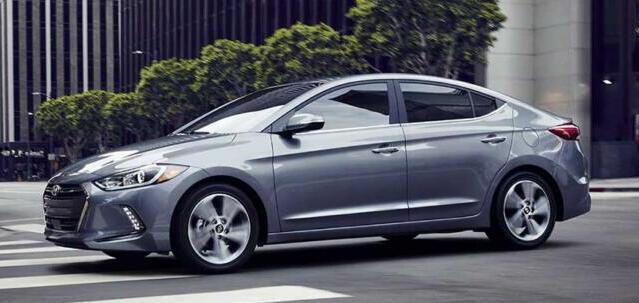
While tow of these brands come from the same automaker, and one from another, none offer a full self-driving feature on either of the lineups. They do, however, offer features that allow for less driver input while driving on highways, freeways, or any long stretch of road.
The Highway Driver Assist (HDA) feature available on select Genesis, Hyundai, and Kia models allows the driver to use cruise control, couple with a lane assist feature and collision avoidance (both front and rear) feature.
This feature is handy for long trips across the province or country, or after a long day at work and a lengthy commute home (which many Fraser Valley residents endure daily).
5.Infiniti/Nissan
The Nissan version of a self-driving feature is ProPILOT Assist. It operates similar to the Hyundai/Genesis driver assist system.
Nissan’s version is more advanced, as it actually allows for limited hands-off time while driving on highways and freeways.
They’ve combined crash avoidance with lane centering, speed control, and GPS to allow for a self-driving feel, even if you need to be a bit more involved than with a full self-driving system.
6.Mercedes-Benz
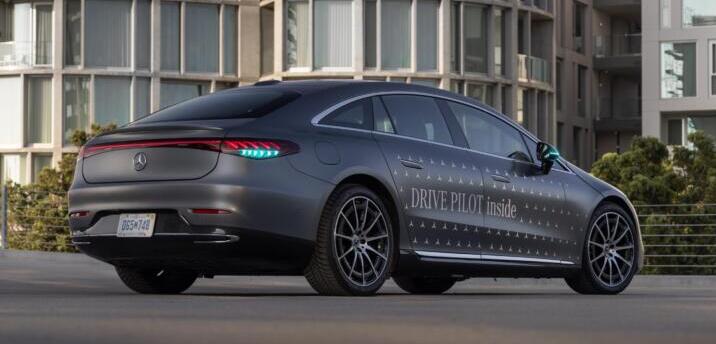
Certain Mercedes models offer their own self-driving system known as Drive Pilot. Their self-driving system is known as a level 3 SDS, which allows for the vehicle to be driven entirely without driver input.
However, because extensive mapping, software updates, navigation calibration, and sensors are required and involved, it is only available presently in Germany and specific parts of the US. Moreover, it is only permitted for use under certain conditions.
7.Tesla

Tesla was one of the first vehicles to introduce self-driving features to consumers across North America.
However, there have been many reports of the Full Self-Driving (FSD) feature failing to response to road problems, and collisions have occurred. This is not specifically on Tesla vehicles but using a very similar system.
Tesla vehicles offer either autopilot or the full self-driving feature. While auto pilot allows you to drive the vehicle without steering, the FSD feature takes care of everything. But be sure to keep your eyes on the road with this one!
8.Volvo/Polestar
Volvo and Polestar vehicles do not have a full self-driving system. However, they do offer a feature called Pilot Assist, which allows for a smoother ride overall.
It also has collision avoidance, lane assist, and just like all other driver assist or FSD systems, complete GPS navigation for route planning.
If you bought a vehicle with a self-driving or driver assist system, and aren’t happy with how it works, give Cash For Cars BC a call. We pay the MOST cash for newer vehicles, with or without self-driving features.
Other Self-Driving Car Brands in North America
The following are vehicles that also offer partial or full self-driving features but are in use primarily in the US.
Many are names you haven’t heard of, but keep an eye out, because they might be the way of the future.
- Aurora
- Aptiv
- Cruise
- Drive A.I.
- Nuro
- Waymo
- Zoox
Various rideshare companies have been attempting to utilize self-driving vehicles, such as Uber and Lyft. Although they are pushing for a fully autonomous cab ride, many attempts have failed due to safety concerns and/or collisions.
Cash for Cars in Metro Vancouver
Thinking about trading up into a newer vehicle that has driver assist, autopilot, or full self-driving features? If so, don’t trade in your current vehicle. Sell it to Cash For Cars BC instead.
Since 1998, we’ve been paying the MOST cash for cars in Metro Vancouver, the Fraser Valley, and on Vancouver Island, regardless of age or condition.
Furthermore, we purchase cars, trucks, SUVs, vans, hybrids, motorcycles, and even commercial vehicles (like retired rideshare cars, rental cars, and taxi cabs).
Get the MOST Cash for Your Car Today!

A simple call, text, or email is all it takes to sell your car quickly, easily, and for the MOST cash. In fact, we purchase most vehicles in under 30 minutes. And our car buyers come to you, not you to them.
Whether you live on the far side of Squamish, the top of the hill in Anmore, or out amongst the farmlands in East Chilliwack, you’ll have the convenience of selling your car from your home, school, or work. Or anywhere else that is most comfortable for you!
So, if you’re looking for a better way to sell your car in Metro Vancouver, the Fraser Valley, or on Vancouver Island, sell it to Cash For Cars BC. We handle all the paperwork, we come to you, and NOBODY Pays More!

